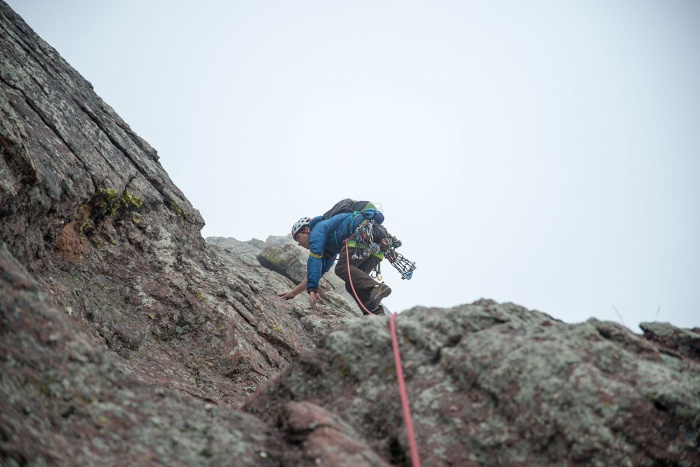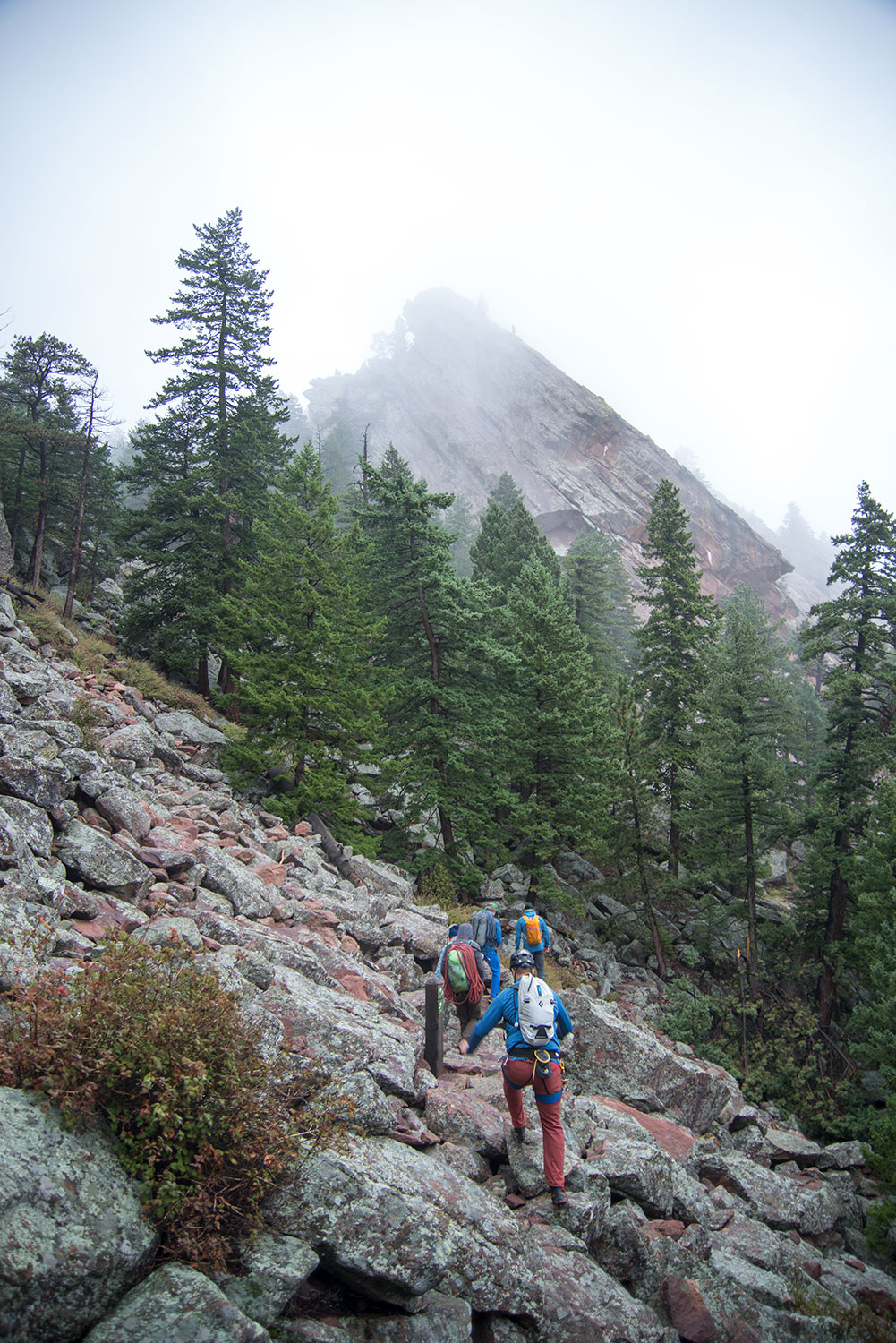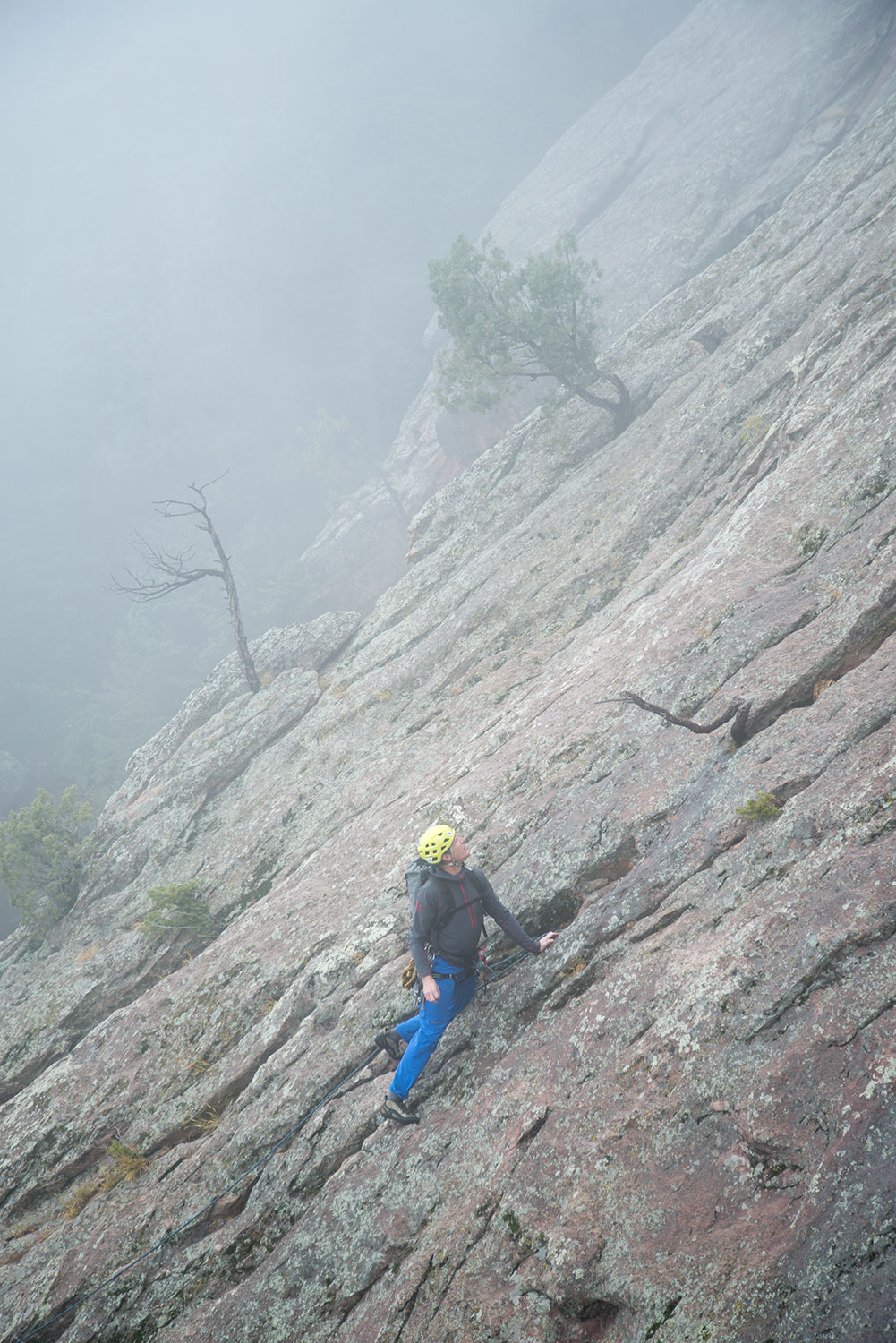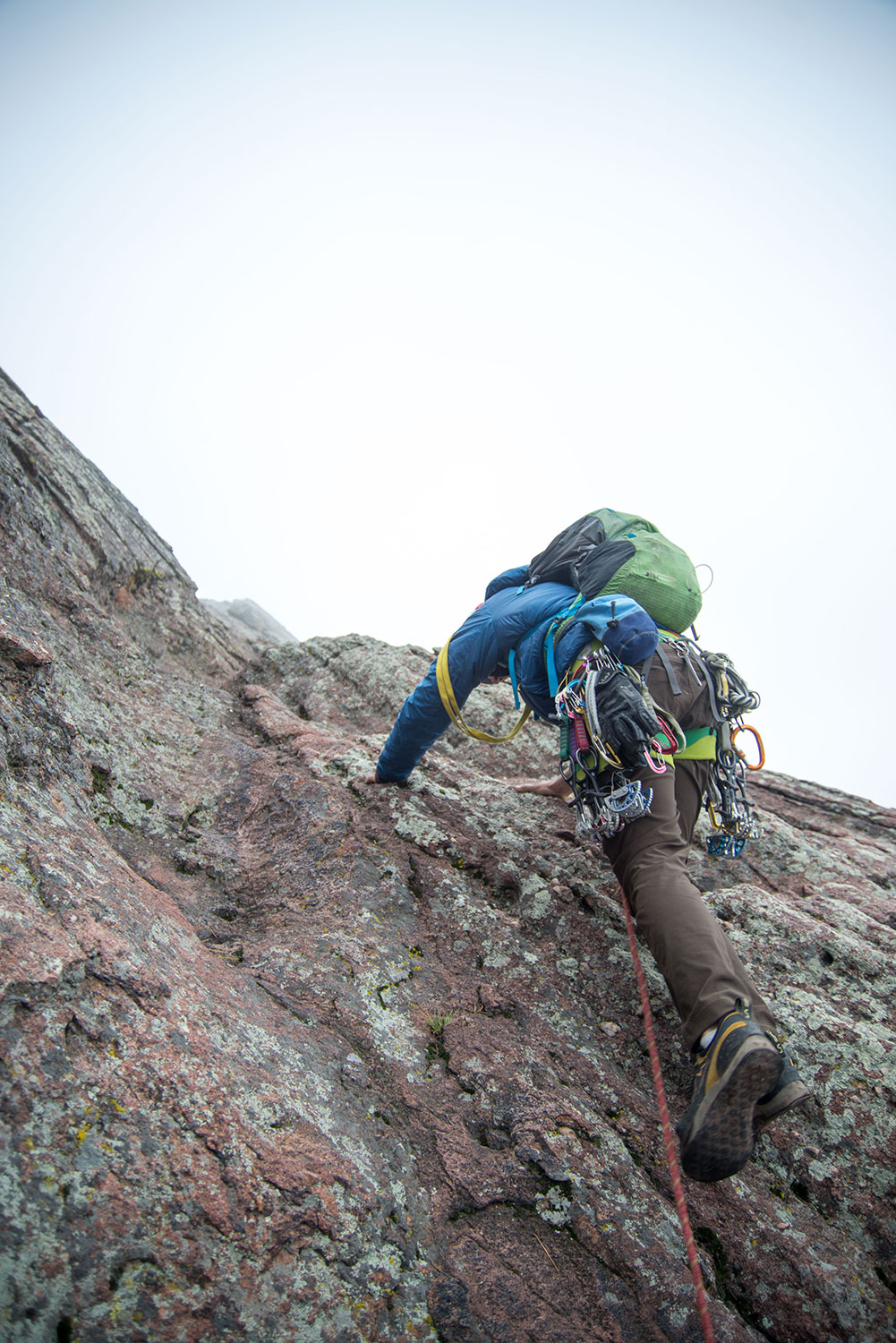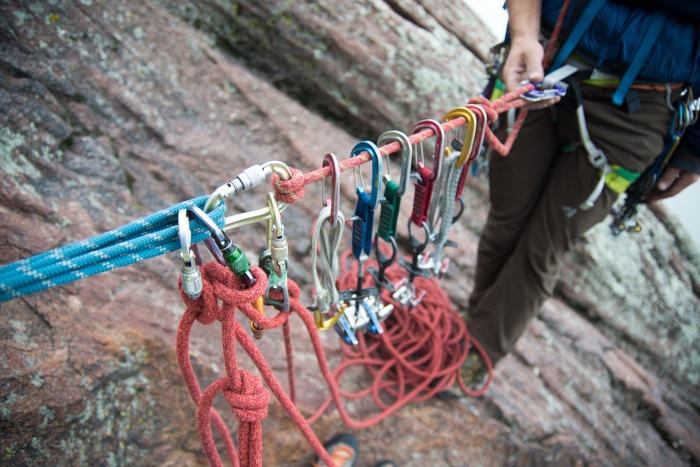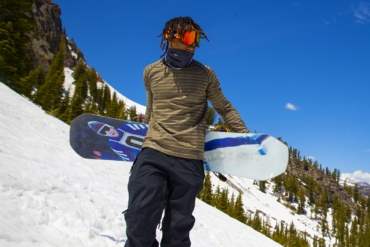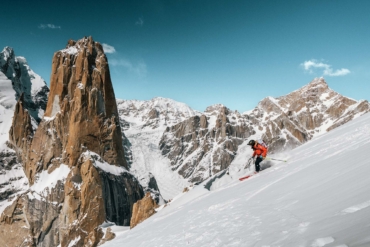Want to climb the Flatirons? This guide goes into the necessary gear, approach, route finding, hazards, and more with mountain-guide beta.
Just outside Boulder, Colo., thousand-foot rock faces jut like the spines of an ancient dinosaur. An hour into my climb of the First Flatiron fog settles in around me. I stand on a small island of lichened red-sandstone in a sea of white clouds.
The Flatirons are one of the most recognizable and stunning rock formations in the world. And their low-angled profile provides a relatively accessible multi-pitch (or even free-solo) climb for budding and veteran climbers alike.
I climbed the Flatirons with two Colorado Mountain School guides and La Sportiva athletes to learn more.
This guide provides supplementary beta for the seasoned climber. Venturing up these monoliths without experience or forethought is dangerous. Thankfully, our CMS guides, Jake Gaventa and Andy Hansen, led our climbing party, dropping expert climbing knowledge and showing some nifty rope systems.
With these tips, summiting these goliaths will become much more attainable.

Flatiron Climbing Approach
Warning: Do not climb without proper equipment and education from certified instructors. Rock climbing is inherently dangerous and can be deadly. Do so at your own risk.
The Chautauqua Park serves as the primary entry point to the Flatirons. There you will find a parking lot that is usually full unless you get there early (before 7:00 a.m. on summer weekends). The best street parking is north of Baseline Road, but note parking regulations.
The trails to the base are all well-marked and have clear signs at forks.
But before you start, look up Flatiron closures on this website. Peregrine falcons nest on the summit of the Third Flatiron, usually between February 1–July 31, however those dates are subject to change, depending on the falcons’ activity.
Routes And Routefinding: First Flatiron
We took Baker’s Way to the North Arete. This yielded six to eight pitches of solid slab climbing. The most common route is the Direct East Face, with over one-thousand feet of rock climbing.
There is no one correct way to climb the East Face, and each time you can tweak gear placements, belay stations, and go a little to the left or right of the main line.
Because of the low angle, expect slab climbing and friction-based moves. It’s all in your feet. Gear placements are few and far between, with runouts of 30 feet not uncommon. The terrain, however, is gentle with many opportunities to stand hands-free.
In spite of the runout, Hansen recommends climbers “always have a clear view of the pitch ahead.”
The Flatirons are suited to the confident trad leader, i.e. the 5.8 range. Most of the climbing is in the 5.4, 5.5, and 5.6.
For more specific route info,the guides recommended buying the Flatiron guidebook. The online database, Mountain Project, is occasionally helpful, but is user-generated, and can have inaccuracies.
Hazards: What To Expect On Multi-Pitch Sandstone
By and large, the biggest hazard when climbing the Flatirons is another climbing party. After a few encounters on our trip, Hansen emphasized both clear and being open to climbing alternatives.
Our guides also recommended having backup routes. When at the base, two to three parties can be in line, so it always helps to have an alternative.

Most often, weather systems move in from the west, and because the climbs take place on the east, it can be hard to see dark storm clouds come in until they are directly on top of you. Look up the weather beforehand, and study the rock for any signs of moisture.
If the rock is wet, weather may come again soon. And any wetness hinders high friction, which is the bulk of Flatiron climbing.
Gear Guide: The Flatirons
Our guides used a 60-meter rope and tied into the middle of it for shorter, 30-meter pitches.
Guides advise a full rack of cams, from finger to fist width, in addition to a single rack of stoppers. Additionally, alpine—or, extendable—draws are musts as the routes meander quite a bit, especially on the aretes.
Everyone in our party wore climbing shoes, and the friction was very helpful. But don’t be surprised if you see people run up these slopes tennis shoes.
How To Get Down From The Flatirons
Each of the Flatirons—First, Second, and Third—have straightforward descents, with the Second being the easiest.
On the First, there is a redundant, bolted anchor suited for rappels. One 60-meter rope rappel gets you off the rock and onto the trail.
On the Second Flatiron, there is a walk-off point 100 feet from the top.
On the Third, you can reach the trail with a series of three rappels, all suitable for a 60-meter rope.

Flatiron Climbing: A Beginner’s Guide
Now the only thing left to do is climb! Strut your stuff on the mountain, be friendly to other climbing parties, and gather all the information you can before your ascent.
We ended our ascent happily on top, with the skies clearing and the rest of the range, including the Second and Third Flatirons, coming into view.
It’s worth noting that a ton of people free-solo these climbs. And some do fall, and die, on these climbs. Anytime you’re concerned about a move, put yourself on belay, and climb normally, placing protection. As our guides put it, “when in doubt, pitch it out.”
Check out the CMS website for additional information on guided tours up the Flatirons and the rest of the world.

